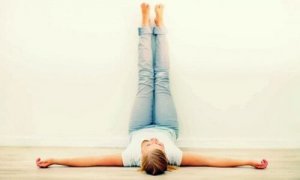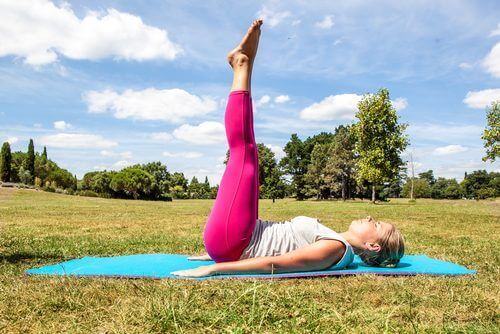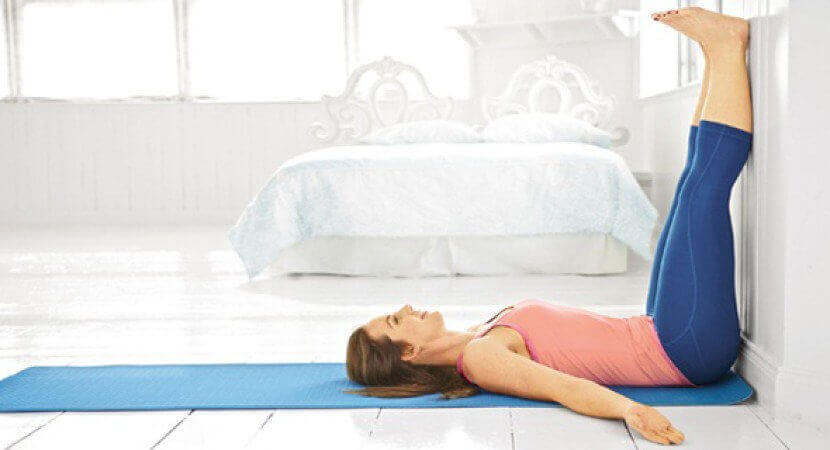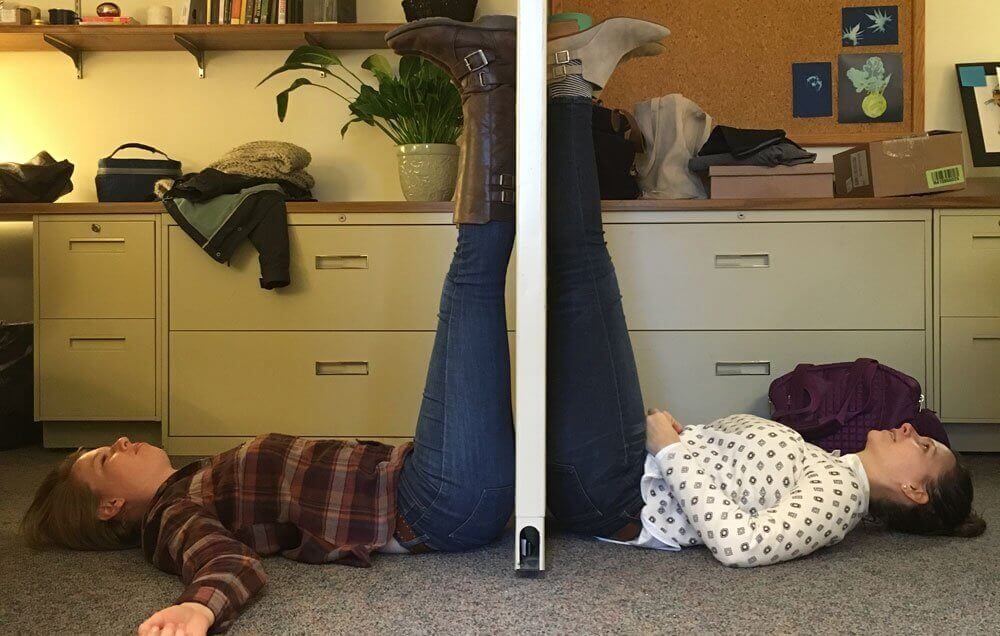The Benefits of Elevating Your Legs For 20 Minutes Per Day


Written and verified by the pedagogue in physical education and nutritionist Elisa Morales Lupayante
Why do we need to elevate our legs?
Elevating your legs is an exercise which can have many benefits for your health. In addition, it’s really simple to do, and it will only take up 20 minutes of your day to do it.
Our heart makes a great effort so that blood flow reaches each of our extremities. This effort is particularly greater for the legs due to the effect of gravity, although they also affect other factors, such as obesity or being overweight.
If you suffer from chronic vein insufficiency (IVC), you’ll know that some of the symptoms include varicose veins, cramps, or a feeling of tiredness in the legs.
Because of this, one piece of advice commonly given to those who suffer from IVC is to elevate the legs above heart level for a few minutes each day. While there is no concrete evidence corroborating these claims, we’ve come across several studies which seem fairly promising.
On the other hand, if your job or lifestyle requires you to spend long hours on your feet or sitting in the same position, there’s no harm in trying out these simple exercises to give your legs a rest and improve your circulation.
What does this exercise of elevating your legs consist of?

As it doesn’t involve any physical exertion or muscle tension, this isn’t exactly an exercise. In fact, it’s more like a yoga pose. Yoga is often used to establish a greater connection between the mind and the body, and has also been known to improve circulation.
However, if you suffer from any kind of back injury, we would not recommend using this technique. Here’s the best way to do it:
- First, place a small cushion under your lower back to help you achieve a more balanced posture. That way, you’ll have your legs flat against the wall in a fully vertical position with your arms extended and relaxed.
- Now, all you need to do is maintain this position for at least 15 to 20 minutes. You don’t need to do anything else. Simply try to feel the balance of your body, and enjoy the sensation of improved blood flow to your head and chest.
When doing this, it’s important to wear loose, comfortable clothes that aren’t tight around the waist or ankles. On the contrary, any clothes that are excessively tight can end up getting in the way of the whole purpose of this exercise: improving blood circulation.
5 benefits of elevating your legs

1. It reduces fluid retention in the legs and feet
Poor circulation is one of the main causes of fluid retention in the legs and feet. This manifests itself in symptoms such as swelling, heaviness, feeling that the socks are too tight, and less flexibility in joints such as the ankles.
Sometimes, this difficulty is caused by various imbalances: a kidney problem, heart problem, being overweight, the effect of some medication, or an inadequate diet.
Putting your legs up can counteract everything that causes or contributes to poor blood circulation, helping to alleviate related symptoms.
2. It relieves tired legs
Sometimes, spending all day on our feet makes our feet swell. So something as simple as taking off your shoes and putting your legs up on the wall will cause the force of gravity to deflate those problem areas.
Elevating your legs is one of the simplest and best ways to help relieve tension in the legs, feet, and even the hips. These three areas are the ones that tend to suffer most at the end of a long day.
By doing this exercise for 20 minute, you change your posture, helping to release tension in these areas. This is said to provide remarkable relief.
3. It improves digestion
Putting your legs in the air is also an exercise commonly used in something known as “active investment.”
Several studies claim that this pose can help to release any trapped fluids that have built up and, in turn, could improve digestion.
4. It relaxes the nervous system

Adopting this position can also help you to improve your breathing. While in this position, you retain more air. Little by little, your body tends to take on a slower and more measured rhythm of in-breaths and out-breaths.
This can have a positive impact on your nervous system, helping to relieve muscle tension, strain, and stress tension that often builds up around the stomach, neck, and temples.
Discover: Check Your Anxiety Levels with this Test
5. It can help give mental calmness
You only need 20 minutes of your time to notice a physical relief that instantly calms your mind. This posture invites us to meditate, relax, and feel more present, more aware of our body to wrap ourselves in calm, well-being, and harmony.
6. It helps prevent and relieve varicose veins
As if that weren’t enough, elevating the legs helps prevent the appearance of varicose veins, particularly in those with a family history or with risk factors, such as obesity or jobs in which you have to spend time standing or sitting.
In addition, in people who already have varicose veins, elevating the legs can strengthen the muscles and reactivate blood circulation. In this sense, it helps reduce pain and swelling.
As you practice this simple therapy, you will notice more and more benefits. So, are you going to give it a try?
All cited sources were thoroughly reviewed by our team to ensure their quality, reliability, currency, and validity. The bibliography of this article was considered reliable and of academic or scientific accuracy.
- Andrade, José A. (2016). La postura humana y su reeducación. Revista Cubana de Medicina Física y Rehabilitación 2016;8(2):231-240.
- Angulo, Dayana. (2019). DISPOSITIVO PARA CONTRARRESTAR LOS EFECTOS DE LA INSUFICIENCIA VENOSA EN MUJERES A TRAVÉS DE MASAJES TERAPÉUTICOS A BASE DE PIEDRAS DE MÁRMOL. UTadeo. Disponible en: https://expeditiorepositorio.utadeo.edu.co/bitstream/handle/20.500.12010/7556/Trabajo%20de%20grado.pdf?sequence=1&isAllowed=y
- Araujo, Diego N., et al. “Physical exercise for the treatment of non‐ulcerated chronic venous insufficiency.” Cochrane Database of Systematic Reviews 12 (2016).
- Cea Ugarte, J., González-Pinto A., Cabo González, O. (2010). Respiración controlada para reducir el estrés. Estudio preliminar de su eficacia sobre el cortisol. Rev. Rol enferm, 33(5): 368-374.
- Eberhardt, R. T., & Raffetto, J. D. (2005). Chronic venous insufficiency. Circulation. https://doi.org/10.1161/01.CIR.0000164199.72440.08
- Ely, John W., et al. “Approach to leg edema of unclear etiology.” The Journal of the American Board of Family Medicine 19.2 (2006): 148-160.
- Hospital de Jerez. AGS Norte de Cádiz (2018). Manual de recomendaciones al alta en urgencias. Junta de Andalucía. Consejería de Salud.
- Joyner, M. J., & Casey, D. P. (2015). Regulation of increased blood flow (hyperemia) to muscles during exercise: a hierarchy of competing physiological needs. Physiological reviews, 95(2), 549–601. https://doi.org/10.1152/physrev.00035.2013
- Kelechi, Teresa J., Jan J. Johnson, and Stephanie Yates. “Chronic venous disease and venous leg ulcers: an evidence-based update.” Journal of Vascular Nursing 33.2 (2015): 36-46.
- National Clinical Guideline Centre. (2012). Varicose veins in the legs. National Guideline. https://doi.org/10.1017/CBO9781107415324.004
- Sangita Devi, A., Kodi Aathi, M. (2014). Prevention of Varicose Veins. International Journal of Advances in Nursing Management, 2(1), 40-45.
- Santler, Bettina, and Tobias Goerge. “Chronic venous insufficiency–a review of pathophysiology, diagnosis, and treatment.” JDDG: Journal der Deutschen Dermatologischen Gesellschaft 15.5 (2017): 538-556.
- Shenoy, Manjunath M. “Prevention of venous leg ulcer recurrence.” Indian dermatology online journal 5.3 (2014): 386.
- Veiras del Río, O., Villa Estébanez, R. ¿Levantar las piernas mejora la sintomatología de la insuficiencia venosa? AMF, 2013, 9(2): https://amf-semfyc.com/es/web/articulo/levantar-las-piernas-mejora-la-sintomatologia-de-la-insuficiencia-venosa
This text is provided for informational purposes only and does not replace consultation with a professional. If in doubt, consult your specialist.








